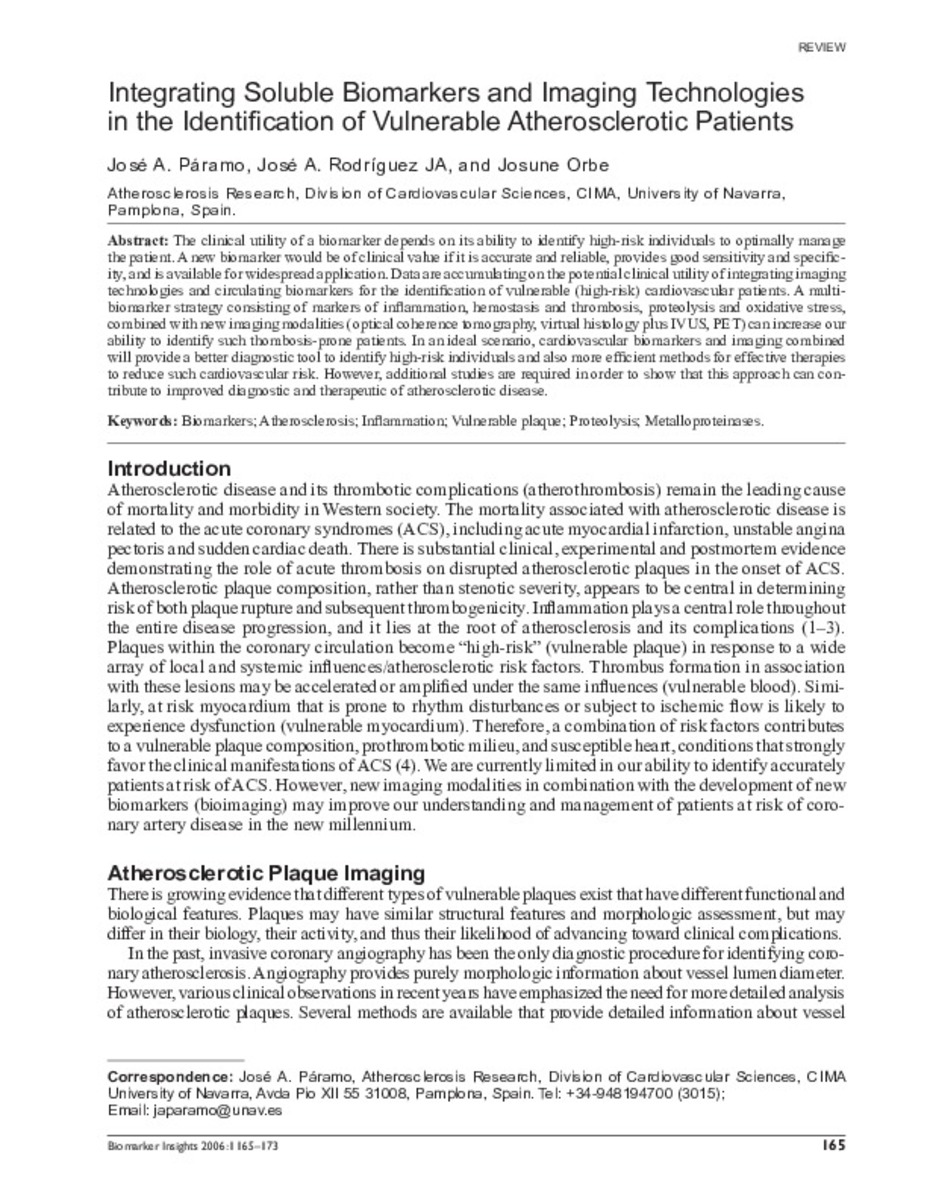Integrating soluble biomarkers and imaging technologies in the identification of vulnerable atherosclerotic patients
Palabras clave :
Biomarkers
Atherosclerosis
Inflammation
Vulnerable plaque
Proteolysis
Metalloproteinases
Fecha de publicación :
2007
Editorial :
Libertas Academica
Cita:
Paramo JA, Rodriguez Ja JA, Orbe J. Integrating soluble biomarkers and imaging technologies in the identification of vulnerable atherosclerotic patients. Biomark Insights 2007 Feb 7;1:165-173.
Aparece en las colecciones:
Estadísticas e impacto
0 citas en

0 citas en

Los ítems de Dadun están protegidos por copyright, con todos los derechos reservados, a menos que se indique lo contrario.







